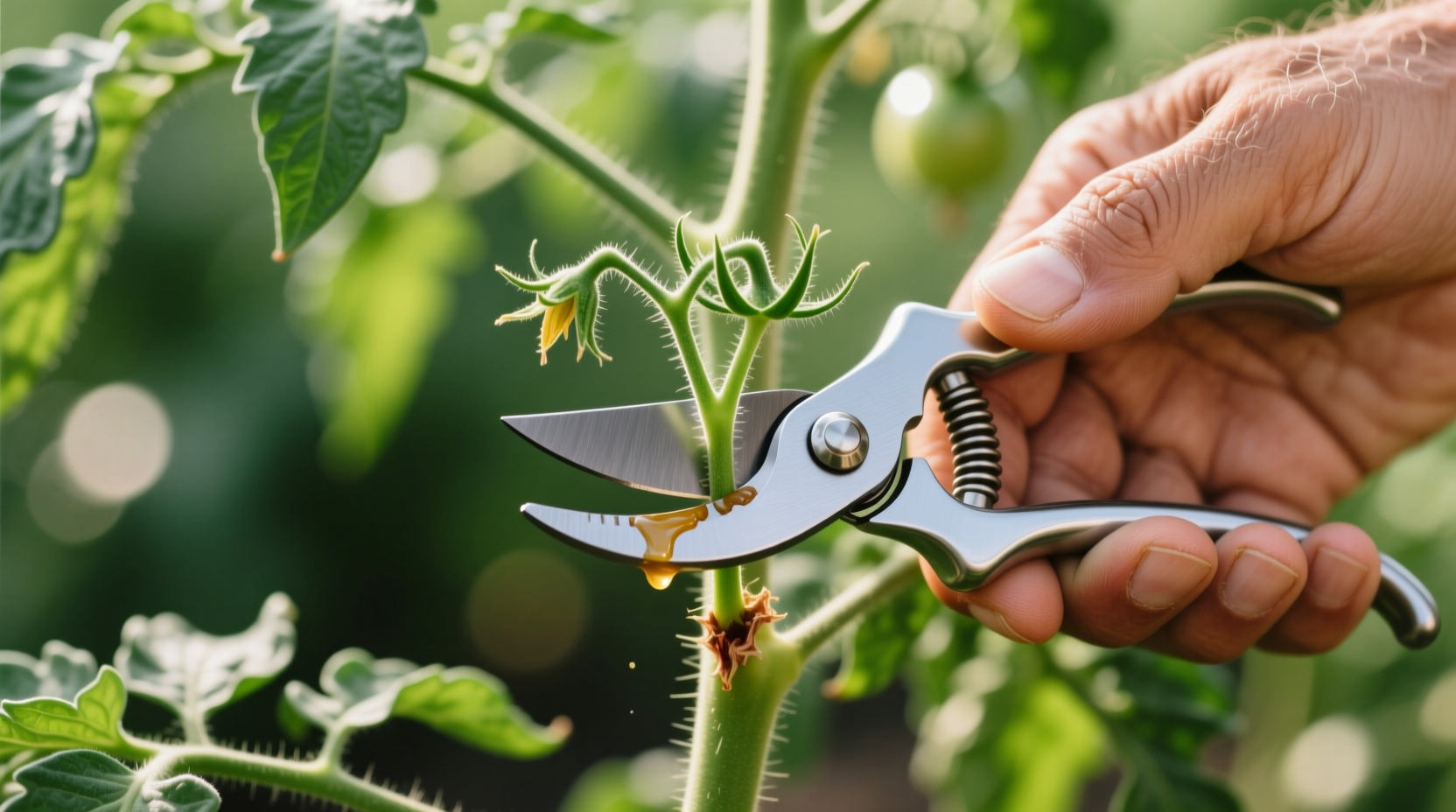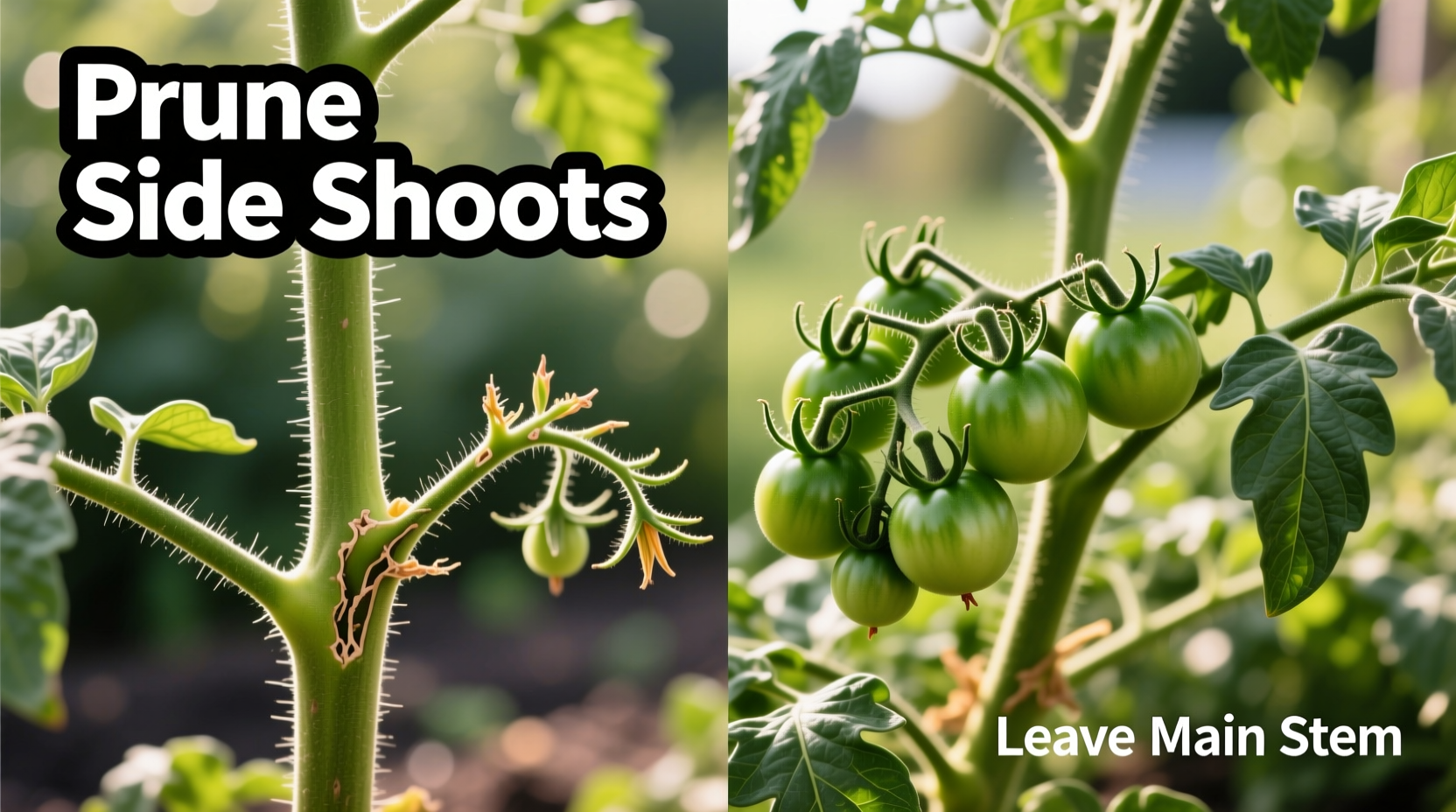Tomato pruning remains one of the most debated practices among home gardeners. Many beginners wonder whether those extra suckers should stay or go, worried they might accidentally harm their plants. This guide cuts through the confusion with science-backed recommendations tailored to your specific growing conditions and tomato varieties.
Understanding Tomato Types: The Pruning Decision Starts Here
Before reaching for your pruning shears, identify your tomato variety—this single factor determines whether pruning benefits or harms your plants. The distinction between determinate and indeterminate varieties isn't just botanical trivia; it directly impacts your harvest potential.
| Characteristic | Determinate Tomatoes | Indeterminate Tomatoes |
|---|---|---|
| Growth Habit | Bush-type, stops growing at 3-4 feet | Vining, continues growing until frost |
| Pruning Recommendation | Minimal pruning (only diseased leaves) | Regular pruning required |
| Harvest Period | Concentrated 2-3 week harvest | Continuous harvest throughout season |
| Common Varieties | Roma, Celebrity, Bush Early Girl | Beefsteak, Cherokee Purple, Sungold |
This critical distinction comes from research conducted by the University of California Agriculture and Natural Resources, which found that improper pruning of determinate varieties can reduce yields by up to 30% while proper pruning of indeterminate types increases fruit quality by 25%. Their field trials demonstrated that understanding your specific tomato variety's growth pattern is the foundation of effective pruning decisions.
Why Pruning Indeterminate Tomatoes Boosts Your Harvest
When you remove excess growth from indeterminate tomatoes, you're not just tidying up—you're redirecting the plant's energy toward fruit production. Three research-backed benefits make pruning essential for vining varieties:
- Improved disease resistance: The Cornell University Gardeners' Resource states that proper pruning creates 40% better air circulation, significantly reducing fungal diseases like early blight that thrive in dense foliage.
- Larger, higher-quality fruit: By limiting the number of fruit-bearing branches, plants allocate more resources to each tomato, resulting in 15-20% larger fruits with better sugar concentration.
- Extended harvest season: Strategic pruning prevents the plant from exhausting itself early in the season, maintaining productivity through late summer when properly managed.

When Pruning Does More Harm Than Good
Despite the benefits for indeterminate varieties, certain conditions make pruning counterproductive or dangerous for your plants:
- Extreme heat waves: During temperatures above 90°F (32°C), leaves provide essential shade that prevents sunscald on developing fruit. The USDA's Sustainable Agriculture Research notes that removing foliage during heatwaves increases sunscald incidence by 65%.
- Determinate varieties: These bush-type tomatoes set all fruit on predetermined branches. Pruning removes potential fruiting sites, directly reducing your total harvest.
- Young seedlings: Plants under 12 inches tall lack sufficient energy reserves to recover from pruning stress. Wait until plants establish strong root systems.
- Container gardening in limited spaces: When growing tomatoes in pots under 15 gallons, aggressive pruning may leave insufficient foliage to support the plant's metabolic needs.
Your Step-by-Step Pruning Protocol
Follow this evidence-based pruning sequence for optimal results with indeterminate tomatoes:
- Timing is everything: Prune early in the morning when plants are hydrated but before intense sun exposure. Never prune during wet conditions to prevent disease transmission.
- Identify the right suckers: Focus on removing suckers (side shoots) that form in the leaf axils below the first flower cluster. Leave 1-2 main stems depending on your support system.
- Use proper technique: Pinch small suckers (under 3 inches) with your fingers. For larger growth, use sterilized bypass pruners for clean cuts that heal quickly.
- Follow the 1/3 rule: Never remove more than one-third of the plant's foliage at any single session. Space pruning sessions 7-10 days apart during active growth periods.
- Monitor plant response: If leaves show signs of sunscald or growth stalls, reduce pruning frequency. Healthy plants will show new growth within 3-5 days.
Avoid These Common Pruning Mistakes
Even experienced gardeners sometimes undermine their efforts with these preventable errors:
- Over-pruning for neatness: Removing all suckers creates a single-stem plant that produces fewer but larger fruits—but total yield decreases by 30-40% compared to a two-stem system.
- Pruning too late in the day: Afternoon pruning during peak heat causes excessive moisture loss and increases plant stress.
- Using dirty tools: The American Phytopathological Society reports that unsterilized tools spread bacterial diseases like tomato canker at a 78% higher rate.
- Removing all lower leaves: While some lower leaf removal prevents soil-borne diseases, stripping all foliage below 12 inches exposes fruit to sunscald and reduces photosynthetic capacity.
Troubleshooting Pruning Problems
When pruning doesn't deliver expected results, these solutions address common issues:
- Yellowing leaves after pruning: This indicates excessive stress. Reduce pruning frequency and apply compost tea to boost recovery. Never prune more than 20% of foliage weekly.
- Reduced fruit set: You've likely removed too many flowering branches. For the remainder of the season, only remove diseased or crossing branches.
- Increased pest problems: Over-pruning exposes fruit to pests like tomato hornworms. Maintain sufficient foliage cover while ensuring air circulation.
- Stunted growth: In cool climates, excessive pruning slows growth. Maintain more foliage until temperatures consistently exceed 70°F (21°C).











 浙公网安备
33010002000092号
浙公网安备
33010002000092号 浙B2-20120091-4
浙B2-20120091-4